The current business landscape has forced enterprises to accelerate their digital transformation. This leaves employees grappling with learning curves and glitches that come with new software and tools. You can no longer put IT service desks on the back burner. You need to bolster your technical support capacities—and you need to do it now.
Read on to learn about the IT service desk challenges you’re bound to encounter. Let’s also check how you can overcome them. But before that, revisit what an IT service desk is and how to organize it best.
What Is an IT Service Desk?
An IT service desk is essentially the technical support offered to internal and external customers with the primary focus on in-house staff. It serves as the point of contact for IT Service Management (ITSM).
The umbrella term, ITSM, covers the policies and actions that facilitate the delivery of IT operational services. It follows the Information Technology Infrastructure Library (ITIL) framework, which prescribes the best ITSM practices.
Your employees can reach out to the IT service desk whenever they encounter difficulties with technical devices and software.
Robust ITSM practices enable the technical team to resolve issues efficiently. Let’s explore them in more detail.
A Tiered Support System
Establishing tiers is an excellent method of organizing an IT service desk. A tiered support system paves the way for greater efficiency with optimized workflows, dedicated teams, and standard operating procedures. It also facilitates fulfilling service-level agreements and enables a proactive approach to incident management.
You can organize your technical support teams into the following tiers:
Level 0: Self-service
The first tier, level 0, covers the tools directly accessible to employees who want to resolve issues independently. One of them is a self-service portal that reduces the support teams’ workload by allowing end users to do the following:
- Find necessary information in the knowledge base to resolve simple issues
- Select relevant services from an IT service catalog
- Input tickets into the system and track their progress
- Communicate with IT technicians through the portal
Self-service portals are ideal for resolving repetitive or basic issues like requests for new software or hardware, password resets, or logging non-urgent incidents.
Your teams can also use the portal to make company-wide announcements about scheduled maintenance and sudden outages. This greatly reduces incoming calls and inquiries about such incidents.
Level 1: First line of direct contact
First-level IT support staff are ready to help out end users who encounter a hiccup they can’t fix on their own. This is usually the point where the first person-to-person contact happens.
Level 1 commonly covers the following issues:
- Troubleshooting (helping end users figure out what the problem is)
- Managing user accounts (assigning role-based access levels and permissions)
- Detecting issues that could possibly blow up into major incidents
- Managing security patches (software updates that address vulnerabilities)
- Installing software
First-level team members are equipped with technical knowledge and the soft skills needed to communicate effectively with end users. In most cases, they handle all incoming requests, solve what they can, and escalate the more complex issues to a higher tier.
Level 2: Technical support
You’ll need more experienced analysts to handle the third tier, as they will be taking over issues the first-level staff are unable to resolve.
The following issues are commonly assigned to level 2:
- Troubleshooting issues escalated by first-level staff
- Crafting content for the knowledge base
- On-site issue resolution
- Documenting major issues and attempts to resolve them
- Establishing standardized processes
- Creating training materials for support teams
Second-level staff must be well-versed in your company’s tech stack. They must also be adept at escalating issues at the right moment and to the right specialists.
Level 3: Expert support
Third-level teams are made up of the top in-house specialists. They are deeply knowledgeable of all tech stacks, products, and services. They also have the highest level of access to technical resources. In many cases, they’re even involved in developing new software and tools.
The responsibilities of this high-level tier staff include:
- Managing support queues to ensure the tickets are properly addressed and escalated
- Troubleshooting incidents that staff from lower tiers are unable to resolve
- Developing content for the knowledge base
- Helping resolve major incidents
- Making sure incidents and attempts to resolve them are properly documented
Incident queues should be thoroughly filtered out before escalating any issue to this level.
Level 4: Third-party support
Fourth-level support teams get involved when you need to draw on a third-party vendor warranty. This usually happens when you encounter issues with software or hardware provided by the vendor.
A well-organized IT service desk will elevate the way you deliver technical support. But it comes with its own set of challenges. We’ll tackle them in the next section.
5 Common IT Service Desk Management Challenges
To effectively manage technical support, you need to be proactive about the help desk issues that go with it. Here are the most common service desk problems:
1 High volumes of incoming requests
Business is becoming increasingly reliant on technology. This translates to more and more employees grappling with new software and tech tools. Without a powerful ITSM strategy in place, technical support teams might easily end up overwhelmed by the deluge of incoming requests.
Instead of resolving the issues, technical support teams can find themselves responding to never-ending chats, emails, and phone calls. This could easily demotivate support staff and frustrate end users.
2 Long resolution times
Mismanagement of incoming requests can result in a build-up of unresolved incidents. It takes longer for the overwhelmed technical teams to fix issues, leaving end users struggling with extended outages and productivity loss. Such inefficiencies can also affect your company’s bottom line.
3 Repetitive tasks
Technical service teams waste too much time answering frequently asked questions and tackling repetitive issues, such as resetting passwords, restoring files, and rebooting devices. They end up doing the same tedious tasks over and over. This can greatly demotivate tech specialists who could work instead on tasks that maximize their skills and career growth.
4 Mitigating the risks of shadow IT
End users tend to use outside software to supplement enterprise systems and tools. And these are not always authorized by the internal IT department. Over time, employees end up using so many unauthorized applications that these outside solutions start to function as a shadow of the internal IT infrastructure. Your technical support teams should be prepared to manage the security risks that come with shadow IT.
5 Managing a mobile workforce
In today’s world, businesses need to be more open to employees using personal devices and taking their work outside the office. Your technical support teams must be equipped to handle a mobile workforce that gains access to sensitive company data from various locations and networks. For starters, you need to establish a bring your own device (BYOD) policy that will set the ground rules and safeguard corporate data.
So, how do you confront these challenges? We’ll talk about solutions in the next section.
How to Overcome IT Service Desk Challenges
Proper strategies and tools will help you deal with the challenges. The following tips will get you on the right track:
1 Reduce call volumes
According to the CFI Group, 76% of customers still prefer to contact the support team via phone. Reducing call volumes will go a long way to easing up your teams’ workload.
Here are some ways to make this happen:
- Use automated tools to spot and resolve issues before they impact the IT support team
- Use service automation to respond to callers and reroute those with simpler problems to the proper channels
You need to understand what’s driving the demand to manage incoming calls and effectively reduce them. For instance, a deluge of IT service requests can be triggered by outages due to outdated CRM. An upgrade will fix the problem—and cut down on support requests. So, by determining the reason, you will be able to resolve the root cause rather than its symptoms.
2 Boost your first-time fix rates
To speed up ticket lifecycles and prevent long resolution times, you must work on the factors affecting first-time-fix or first-contact-resolution rates. Try this:
- Equip agents with the tools and information they need to resolve issues
- Address long-standing infrastructure problems that are beyond the realm of first-level responders
Agents should be trained to address requests quickly and effectively, preventing escalation to higher tiers where the tech specialists are more skilled and highly paid.
3 Keep up with business changes
Proactive thinking is key to managing the demand for IT support services. You need to be fully aware of how existing and forthcoming initiatives can impact IT. This way, you can prepare for any spike in demand or even prevent it. Here are some ways to keep up with business changes:
- Regularly set up meetings with business unit managers to discuss existing and upcoming projects.
- Require business managers to inform the IT support teams of any project that’s bound to increase the demand for technical services
- Regularly discuss infrastructure and process changes with the IT infrastructure & operations (I&O) teams
Staying up-to-date with business developments lets you anticipate and manage key changes, such as the company allowing BYOB and remote work.
4 Choose the right service desk software
The proper service desk software will help you confront many challenges, from automating repetitive tasks and mitigating security risks to maintaining records of tech assets to managing a mobile workforce. To choose the best solution for your organization, consider the following factors:
- Requirements. Determine the requirements for your future help desk solution by assessing your current needs and considering any upcoming projects and business changes.
- Engagement. Consult with key IT decision-makers and secure buy-in from top executives.
- Budget. Make your budget estimates and build a business case to justify the expenses.
- Vendor selection. Shop around for the best vendor that can meet your requirements and budget. Consider implementing your own if there are no suitable ready-to-use solutions in the market.
- Adoption. Any new system is a waste of time and money if people refrain from using it. So, make sure you come up with strategic training to ensure full adoption of the service desk software.
- Data migration. Audit and analyze what data should be transferred and what is better to leave behind to avoid dragging mess into the new platform. Help Desk Migration has a handful of successful cases, and our Migration Wizard can help you out. Schedule a call to discuss your service desk migration case.
In the next section, we’ll discuss the help desk solutions that should be at the top of your list.
8 Best Service Desks for Dealing with IT Service Challenges in 2024
Not all IT service desks are created equal. Here’s a list that narrows down your choices to the top eight.
Jira Service Management
Jira Service Management is a ticket management system renowned for its escalation and incident management tools. Engineering teams use it for tracking and reporting bugs. They rely on its customizable workflows to monitor progress and supervise the teams’ workload.

Source: Atlassian
ServiceNow IT Service Desk
An enterprise-oriented platform, ServiceNow has all the features your technical teams need to run a service desk that effectively meets the needs of the whole organization. It even supports a mobile workforce, with workspaces designed for mobile and virtual agents.

Source: ServiceNow
Vivantio
Vivantio is an enterprise-level platform remarkable for its flexibility and scalability. Large organizations operating in multiple locations can easily adjust it to optimize workflows and support the operations across departments.
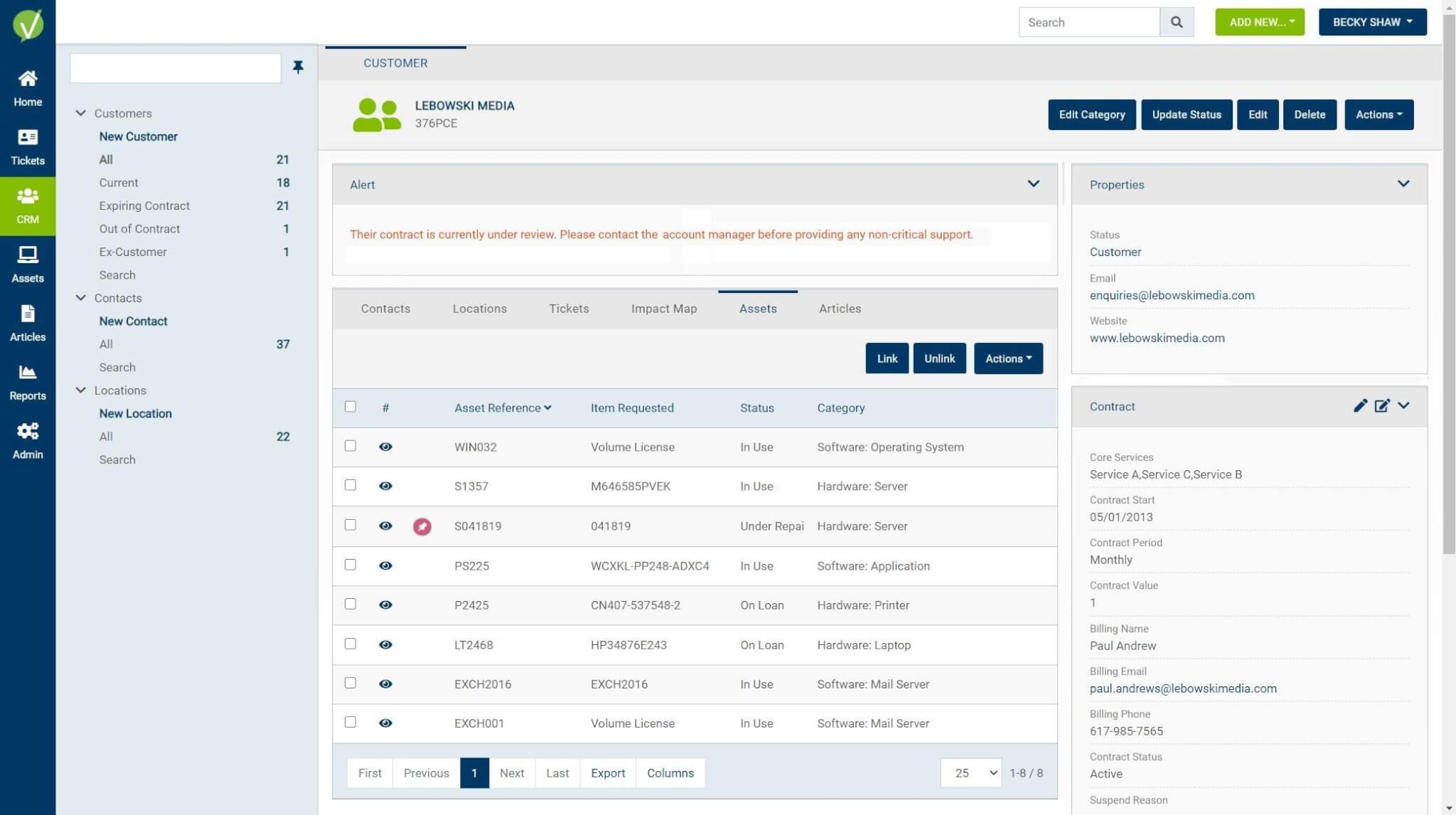
Source: Vivantio
HaloITSM
An all-inclusive ITSM solution with standardized processes and valuable analytics, HaloITSM enables your teams to deliver IT services that meet your specific business needs. Automated workflows and centralized communications support the delivery of technical services and client engagement.
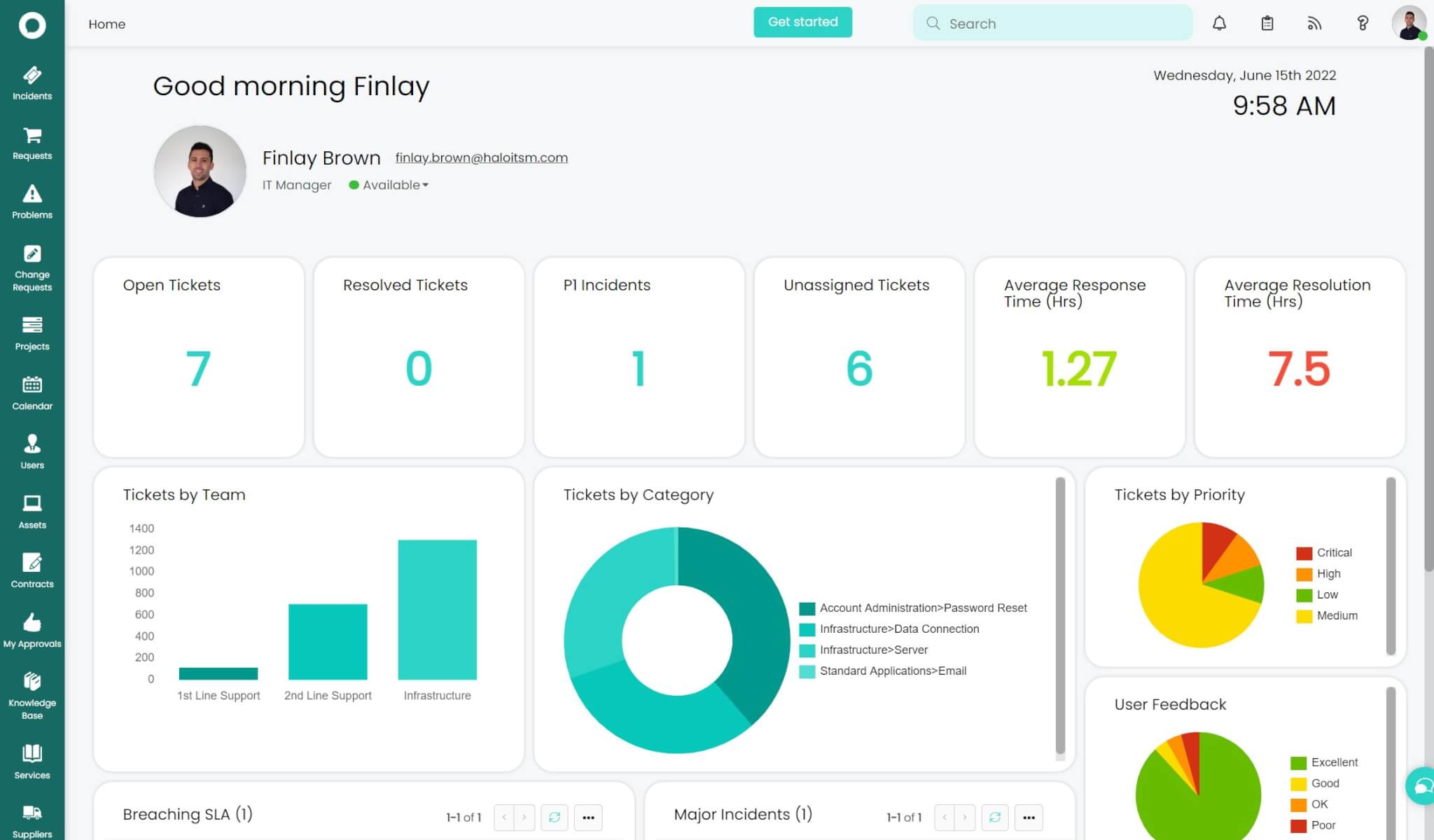
Source: Halo ITSM
ServiceDesk Plus
ServiceDesk Plus focuses not just on problem-solving but also on customer service, ensuring the end users get the best experience. Its incident management tools improve agent productivity, speed up ticket resolutions, and minimize potential outages.
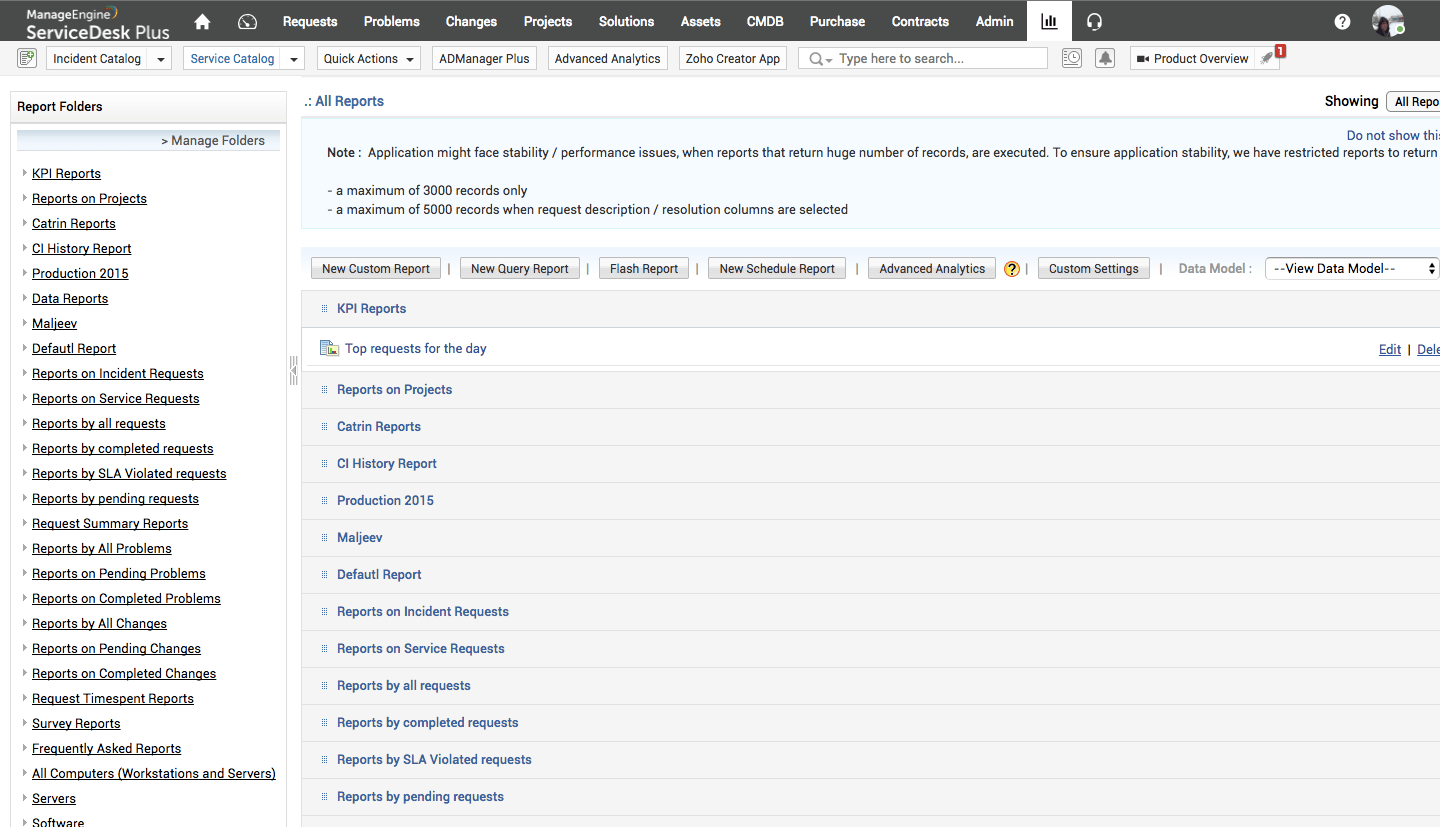
Source: ManageEngine
TOPdesk
TOPdesk features an ITSM solution particularly useful for IT administrators. It enables the efficient logging and processing of incidents. You can quickly assign incidents to relevant agents. A self-service portal reduces the technical support teams’ workload by equipping end users with mechanisms to resolve simple issues.
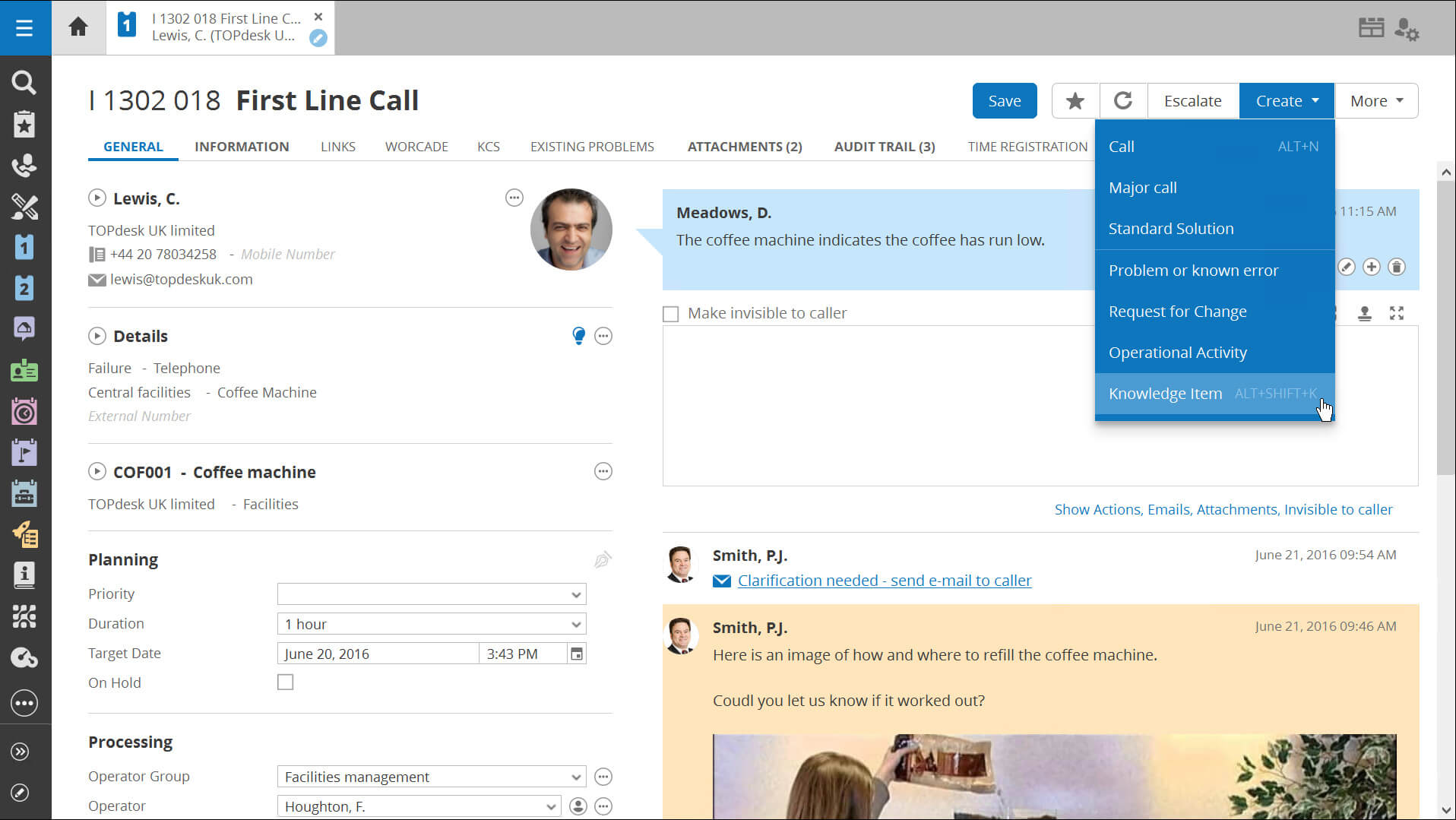
Source: TOPdesk
Zendesk
Zendesk offers a helpdesk interface designed to make the job of the support staff easier. It funnels all queries into a centralized location, allowing agents to complete their tasks without switching between platforms. This highly customizable software lets you standardize processes and replies with macros and personalized responses.
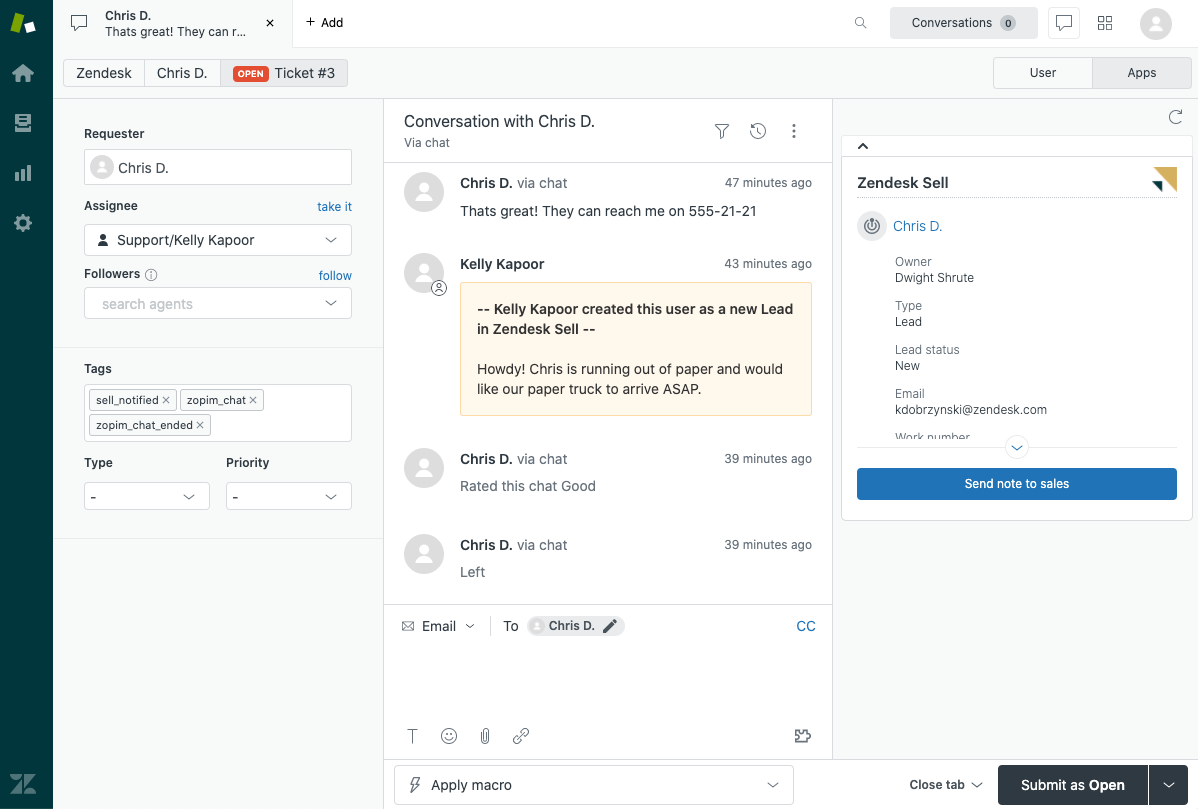
Source: Zendesk
Your best choice depends on your specific business needs. Requirements analysis will help you select the proper service desk system.
How to Overcome IT Service Desk Challenges?
Unlocking the full potential of technical support hinges on setting up an IT service desk that caters to the ever-growing demand. This process usually involves some common help desk problems, and you can only stay on top of them with the right strategies and software.
| Service Desk Challenge | What is it? | How to fix it? |
| High volumes of incoming requests | Business reliance on technology leads to an increase in employees facing new software and tech tools. Without a robust ITSM strategy, technical support teams can become overwhelmed by a deluge of incoming requests. Instead of resolving issues, they may end up responding to endless chats, emails, and phone calls, which demotivates support staff and frustrates end users. |
|
| Long resolution times | Mismanagement of incoming requests results in a backlog of unresolved incidents. Overwhelmed technical teams take longer to fix issues, causing extended outages and productivity loss for end users. These inefficiencies can also impact the company's bottom line. |
|
| Repetitive tasks | Technical service teams spend excessive time answering frequently asked questions and dealing with repetitive issues like password resets, file restorations, and device reboots. They end up performing monotonous tasks repeatedly, demotivating tech specialists who could focus on more challenging tasks that utilize their skills and promote career growth. |
|
| Mitigating the risks of shadow IT | End users often resort to unauthorized software to supplement enterprise systems, creating a shadow IT infrastructure. Technical support teams must be prepared to manage the security risks associated with shadow IT. |
|
| Managing a mobile workforce | Modern businesses require support for employees using personal devices and working remotely. Technical support teams must handle a mobile workforce accessing sensitive company data from various locations and networks. Establishing a bring your own device (BYOD) policy is crucial to set guidelines and protect corporate data. |
|


